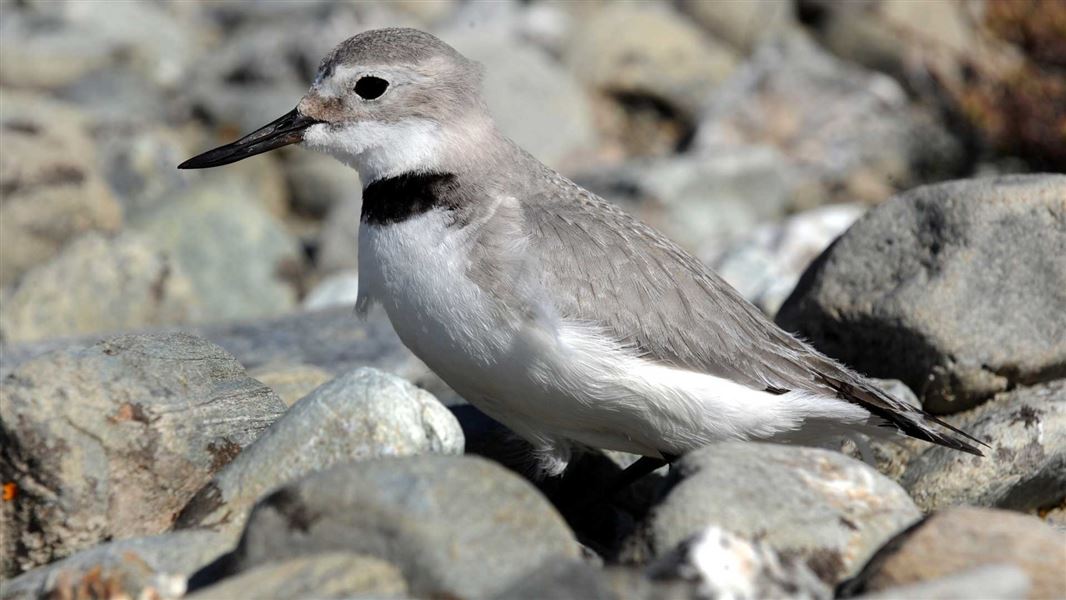National status: Endemic
Conservation status: Nationally Increasing
Found in: Mainly braided rivers South Island
Threats: Predation, habitat loss, human disturbance
Conservation of braided river birds (PDF, 768K)
Species information: Wrybill on NZ Birds Online
Image gallery
Wrybills are classified as a threatened species due to their low and declining numbers.
Adaptive feeding
Birds on braided rivers have evolved to feed in distinct ways. Specialisation minimises competition for food between the bird species.
Wrybills feed in shallow channels, riffles and the edges of pools. Their bent bill is specially adapted to allow them to reach under stones for mayfly larvae.
When food is scarce, they move into stableside channels and pond areas to find food. In winter, wrybills migrate to North Island harbours and feed in flocks on the mudflats.
Each pair of wrybills, stilts, dotterels and oystercatchers defends a territory and nests alone. The chicks are active soon after hatching, following the parents as they forage for food. Within hours, newly-hatched chicks can hunt for food and swim if necessary.
Common threats to braided river birds
More on Threats to braided rivers.
Risky river breeding
Breeding on a riverbed is a risky business. Many eggs and chicks do not survive. Riverbed birds have adapted to cope with floods and are able to renest if eggs or chicks are lost.
Birds with good nesting sites are more likely to raise chicks successfully. The best nest sites have:
- islands surrounded by a moat of water for protection from predators
- high points which are less flood prone
- little or no vegetation for all round visibility
- a good food supply close at hand
- little or no disturbance.
Predators
Swamp harriers/kāhu and black-backed gulls/karoro are natural predators of braided river birds. These avian predators have taken advantage of changes made by humans and their numbers have increased dramatically.
Braided river birds have good camouflage and use distraction to cope with avian predators. Wrybills, oystercatchers and dotterels often pretend to have a broken wing to lead predators away. Terns, gulls and oystercatchers may dive-bomb and call loudly.
However these defences against avian predators are little use against introduced predators such as cats, stoats, ferrets, rats and hedgehogs. These are the main threats.
Ensuring the survival of the birds' natural open habitat is important in combating predation.
Habitat loss and human disturbance
The fragile ecology of the braided river system is being destroyed by the invasion of weeds.
Human activity including land development and recreational activities disturb nesting birds. Birds may abandon their nests if disturbed.
